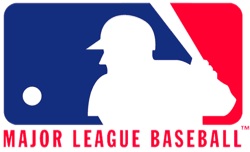 It’s still a hot topic: the decision by Major League Baseball to eliminate home-plate collisions, protecting both catchers and baserunners. Jesse Goldberg-Strassler looks at how the change will affect the game.
It’s still a hot topic: the decision by Major League Baseball to eliminate home-plate collisions, protecting both catchers and baserunners. Jesse Goldberg-Strassler looks at how the change will affect the game.
In Orlando last week, Major League Baseball announced an end to collisions at home plate. The exact details have not been announced yet, but the objective is clear: too many players (particularly catchers) have been injured on collisions at the plate, and the danger posed to a player’s health far outweighs any positive gained.
There has been pushback and protest, as you might expect.
I wonder if there was pushback in the middle of the 20th century, before padded outfield walls and warning tracks became routine. he lynchpin moment may well have occurred in 1947, as historian Peter Morris notes in A Game of Inches, when Brooklyn star Pistol Pete Reiser crashed into the fence in a moment “so violent that last rites were administered (but he recovered).” This was one of eleven times in Reiser’s shortened career that he was taken off the field in a stretcher.
Prior to 1947, showing a bit of forethought, the Cleveland Indians added protective padding to their walls. In 1948, the Dodgers followed suit. A ten-foot warning track was made standard in the Majors entering the 1950 season. Not every park has a padded fence now — Clinton’s walls are wooden, for instance, and Columbus still had brick walls within a decade ago — but you would be hard-pressed to argue that having a protected outfield boundary isn’t better for baseball and its players.
In football, the spectacle of the collision occurs on most every play. Even the most legal, law-abiding hit can produce a concussion or a season-ending tear. A football game without injury comes along as often as a well-liked BBWAA Hall of Fame announcement.
Football requires its collisions. Baseball does not.
An injury in a baseball game is rare: a pitcher suffering an arm ailment, a baserunner jamming a finger into a base, a hit-by-pitch breaking a rib, and the like. These are injuries of repetition or fluke. A pulled hamstring comes of a player not stretching properly, while a strained oblique comes from a strength and conditioning program that neglected to strengthen the whole body. If a player dares to slide head-first into first base, he brings upon himself whatever injury the baseball gods decree.
Home-plate collisions don’t come under any of these categories. The catcher is set up to block the plate, sometimes illegally without the ball in his possession. The runner lowers his head and barrels in with shoulder down or forearms up. It’s a play of hustle and grit, the significance of one run is on the line. Everyone tenses. Time slows down.
I’ve seen concussions. I’ve seen seasons end. I’ve seen careers end, one in a nastily broken leg that brought an ambulance onto the field. I can understand why former catchers Mike Matheny and Bruce Bochy were at the forefront of the discussion to rid the game of collisions. One run isn’t large enough to risk several months of time on the DL, or, at the most a career.
New parents are keenly aware of worst-case scenarios — a coffee table, an outdoor pool, and a playground swing set now each present a far different threat than they ever have before.
Baseball is the opposite. Baseball doesn’t see threats until they cut down the game’s players, sometimes again and again. Ray Chapman’s death in 1920 provided one wake-up call; Pete Reiser hitting the wall in 1947 provided another. It took until Buster Posey’s 2011 collision for us to have a real conversation about collisions. Meanwhile, we might never figure out how to save pitchers from sizzling liners back through the box (let alone ignore the potential hazards posed by bullpens located down each line rather than beyond the fence).
But if a wake-up call is what baseball needs, then so be it. The game is safer now than it was in 1947, and — thanks to the efforts of Matheny, Bochy, and others — it will keep on becoming safer in the years to come.
Jesse Goldberg-Strassler is the voice of the Lansing Lugnuts and the author of The Baseball Thesaurus, set for a second edition in 2014.
—-
This first appeared in Are you a subscriber to the weekly Ballpark Digest newsletter? You can sign up for a free subscription at the Newsletter Signup Page.
Share your news with the baseball community. Send it to us at editors@augustpublications.com.
Join Ballpark Digest on Facebook and on Twitter!
Follow Ballpark Digest on Google + and add us to your circles!
